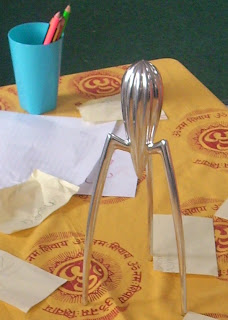 Another great aspect of Douglas Park School is their dog, Billie, a 5-year-old Golden Labrador. Owned by Annie, the school manager, Billie hangs out in the entrance hall welcoming all visitors and enhancing the family feel of the place.
Another great aspect of Douglas Park School is their dog, Billie, a 5-year-old Golden Labrador. Owned by Annie, the school manager, Billie hangs out in the entrance hall welcoming all visitors and enhancing the family feel of the place.Doing what dogs do best, Billie offers a sense of security for children, particularly those with emotional or social difficulties; she brings a sense of fun to heated debates (she is tactically deployed to defuse any tense situation involving an irate parent or a pompous inspector); and she is the favourite attraction for pre-schoolers who look forward to patting her whilst Mum or Dad drops off their older siblings (I bet this "sales pitch" is one of the many reasons why Douglas Park recruits more and more children every year).
Now though, Billie is training to be a Reading Dog. Basing herself in the new entrants room (for 5-year-olds), Billie sits attentively, listening to a child reading or watching whilst they show their latest piece of writing. Being a wholly appreciative listener, the children really enjoy having a captive audience all for themselves!




